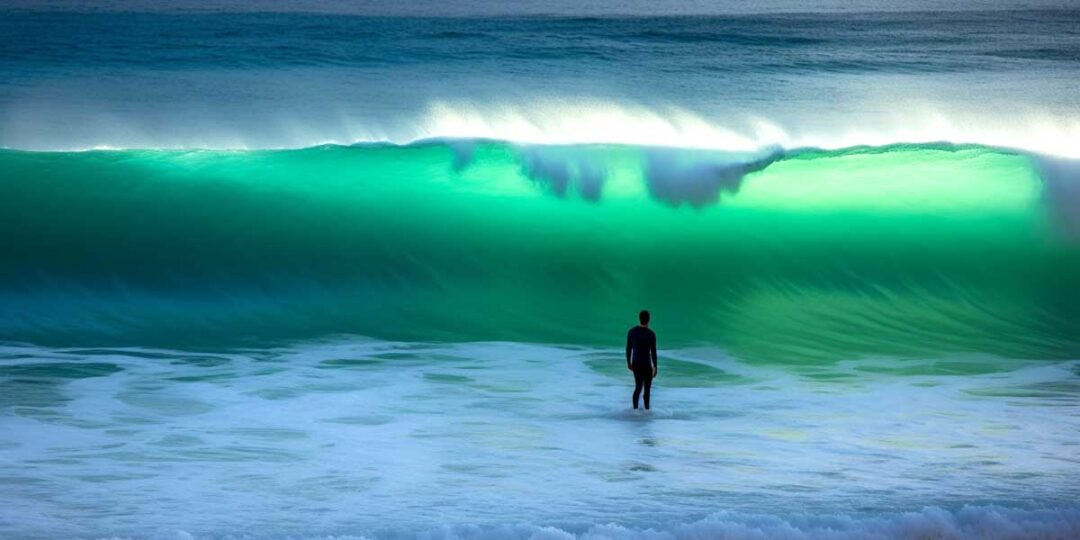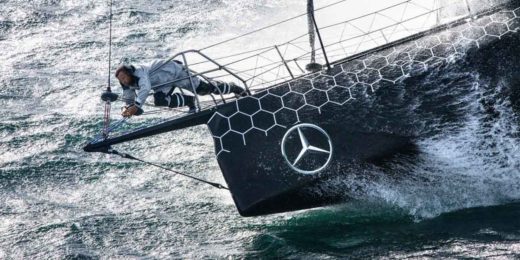I’ve always associated Easter with surfing. Specifically, the annual surfing competition at Bells Beach, Victoria. This year, as I watched the highlights, I thought about the similarities between surfing and the adoption of technology – it’s all about picking the right wave.
Different technologies are a bit like surf breaks. Some are easily accessible, some are known to a select few. Some are dangerous, but thrilling. Some only ‘work’ when the conditions are right. And sometimes there might be a 100 year storm or a tsunami.
These analogies are going to have some big holes in them!
The Metaverse = Cortes Bank
100 miles or so west of California is an almost mythical place, a submarine outcrop of land, where massive waves can occur if the conditions are right. In the 1990s, Godfather of the Metaverse, Neal Stephenson wrote Snow Crash which predicted a future world. Around the same time, Larry Moore, photo editor at Surfing magazine made flights out across the Cortes Bank.
Cortes Bank remains relatively unexplored, and only a handful of surfers have ever attempted to ride its promised waves. The Metaverse is almost as elusive. The height of the most recent hype wave in 2022 saw companies like Disney hire ‘Chief Metaverse Officers’ and brands invest millions in virtual experiences.
Cortes Bank is a giant and complex wave break that offers a unique challenge to only the most adventurous and talented surfers, the Metaverse is a multifaceted concept that is going to take a long journey to get to. Like Cortes Bank, the Metaverse presents a significant challenge in terms of navigating its complexity and ensuring safety and security for users.
EDIT / UPDATE : Actually, as I think about it, the Metaverse is more like Kelly Slater’s Surf Ranch. An artificial 6-foot wave that travels over 2300 feet yielding up to minute long rides. It fulfils all the functions of the Metaverse, a man-made representation of a wave that can provide the surfing experience to people who live nowhere near the sea. An exclusive experience for a chosen few when most people would rather be at the beach.
Web3 = Nazare
Around the same time as Satoshi Nakamoto wrote a whitepaper about what was to become BitCoin, surfers decided to start riding a wave called Nazare. On the Portuguese coast, where a deep underwater canyon channels uninterrupted ocean waves against the shallow coast, the theory of the perfect wave comes into being. While there are only a handful of pioneers who can ride this wave, it has drawn attention. Visitor numbers have increased from 80,000 visitors in 2015 to 174,000 in 2017.
Both Web3 and Nazare are relatively unexplored. They require a great deal of expertise and knowledge to navigate successfully, and both present a high degree of risk to those who venture into them. Like Nazare, Web3 presents significant challenges in terms of and user adoption but there is fame and glory for those who pull it off.
ChatGPT = Bondi Beach
When asked to compare itself to a surf break, ChatGPT replied hilariously…
ChatGPT is like a playful beach break – Just as a playful beach break offers a fun and accessible experience for surfers of all levels, ChatGPT is a language model that offers a wide range of responses and interactions for users of all levels. ChatGPT is designed to respond to a wide range of queries and provide useful and informative answers. However, like a playful beach break, ChatGPT is not without its limitations.
ChatGPT and the current AI tools are just like Bondi Beach in Sydney Australia.
- It’s a city beach, easily accessible by anyone who wants to visit.
- People think they know all about Bondi, even people who live in Sydney who have never been.
- Some people just sit and watch, some stick their toes in, some are expert users who surf the unpredictable waves.
- There are much better beaches, even in Sydney, but Bondi is the famous one.
- Even on the calmer days, there are dangerous rips can can pull people out to sea.
- There are some dangers that are get more headlines than they should – like shark attacks.
- The beach is free and open to all, but that doesn’t mean that developers don’t want to make it exclusive so that only the rich can experience the benefits.
- Long term, predictable scenarios may wipe out the livelihoods of those who depend on the beach for employment. Climate change and rising sea levels are coming.
Unlike Bondi Beach, AI doesn’t have professional life-guards whose job it is to protect tourists who are unaware of the dangers or close the beach when the storm surge creates life threatening conditions.
I used to live near Bondi Beach. I used to surf there. I used to watch the tourists get caught in the rips. I never saw a shark, even though I knew they could be there. I paddled out and watched the horizon.
That’s what surfers do. They look out to sea, towards the horizon. They use local knowledge to position themselves in the best spot for the right wave and wait. Not every wave can be surfed. Not every wave should be surfed. Sometimes it is best to let the wave pass by and crash onto the beach. Sometimes it is best to sit on the beach and watch until the storm passes.
There will be wipe-outs. Learn to hold your breath underwater and ride out the chaos. Then get back on your board, paddle out and look to the horizon.





No Comments